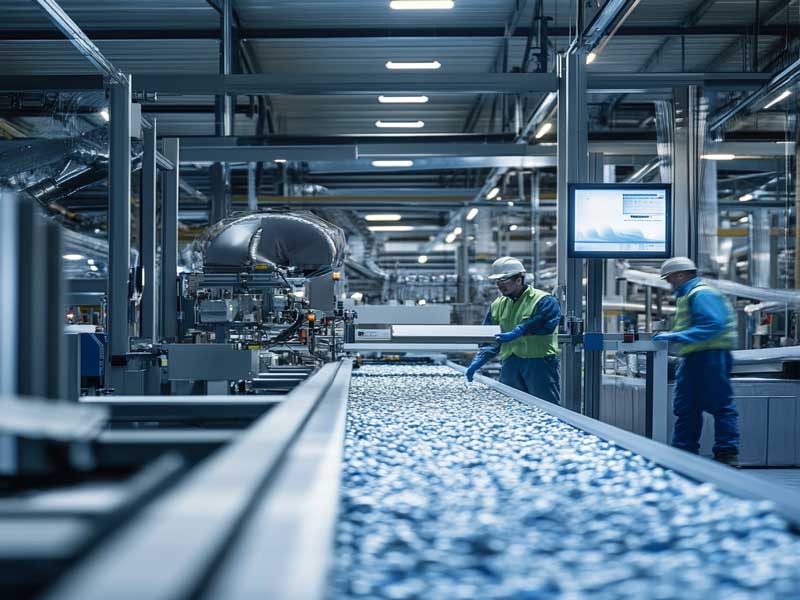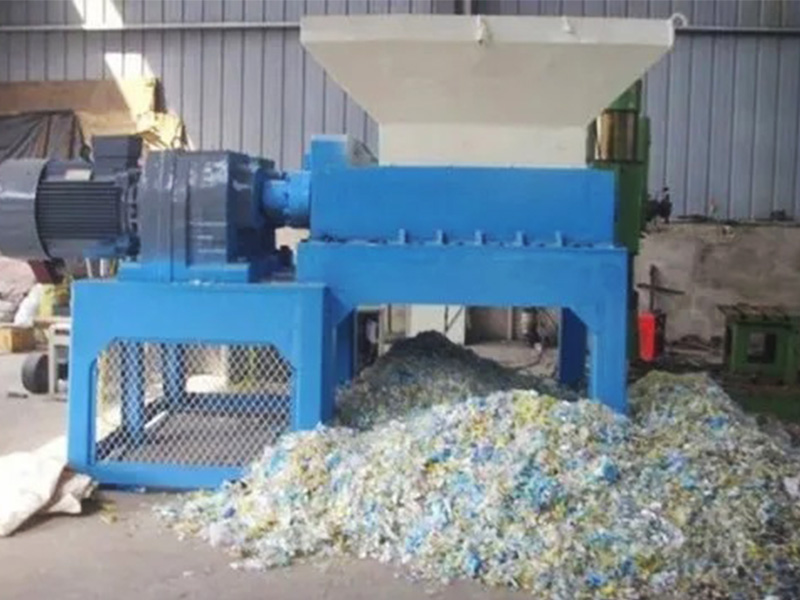The Urgent Need for Sustainable Alternatives in the Plastic Industry
The plastic industry stands at a crossroads. Conventional plastic production consumes approximately 8% of global oil production annually, contributing significantly to resource depletion and environmental degradation. This unsustainable trajectory has catalyzed innovation in biodegradable, compostable, and recycled plastic alternatives.
Manufacturers are increasingly recognizing that adopting eco-friendly plastic solutions isn't merely an environmental decision—it's a strategic business imperative that affects:
● Brand reputation and consumer loyalty
● Regulatory compliance and market access
● Long-term operational costs and resource security
● Investment appeal in an ESG-focused market
Recent industry surveys indicate that 67% of manufacturing executives now consider sustainability initiatives, including eco-friendly materials adoption, as "very important" to their long-term business strategy—up from just 29% five years ago.

How Recycled Plastic is Transforming Manufacturing Economics
Recycled plastic has emerged as one of the most viable pathways toward sustainability in manufacturing. Advanced recycling technologies now enable the production of high-performance recycled materials that match or even exceed the properties of virgin plastics in many applications.
The economic benefits of incorporating recycled plastic include:
● Reduced raw material costs: As virgin plastic prices continue to fluctuate with oil markets, recycled materials offer more stable pricing models.
● Lower energy consumption: Manufacturing with recycled plastic typically requires 40-75% less energy compared to virgin plastic production.
● Waste management savings: Companies that implement closed-loop systems can significantly reduce waste disposal costs.
● Tax incentives and subsidies: Many governments now offer financial incentives for manufacturers incorporating recycled content.
A growing number of manufacturers report that the initial investment in transitioning to recycled plastic infrastructure typically achieves ROI within 2-3 years, with accelerating returns thereafter. Companies that have fully embraced recycled plastics report average cost savings of 15-22% over a five-year period compared to continued reliance on virgin materials.
Renewable Resources: The Future of Plastic Manufacturing
Beyond recycling, the incorporation of renewable resources represents the next frontier in eco-friendly plastic innovation. Bioplastics derived from agricultural by-products, algae, and other renewable feedstocks are gaining traction across multiple industries.
These materials offer significant advantages:
● They reduce dependency on fossil fuel resources
● Many can be designed for enhanced biodegradability
● They often have reduced carbon footprints compared to conventional plastics
● They create new economic opportunities in agricultural communities
Leading manufacturers are already incorporating these innovations into their product lines, with the global bioplastics market projected to grow at a CAGR of 19.7% through 2030. Recent technological breakthroughs have improved heat resistance and mechanical properties—historically key limitations of bioplastics—enabling their use in increasingly demanding applications.
Addressing Plastic Pollution Through Design and Material Innovation
Plastic pollution remains one of the most visible environmental challenges of our time, with an estimated 11 million metric tons of plastic entering oceans annually. Manufacturers are increasingly recognizing their responsibility to address this crisis through both material selection and product design.
Innovative approaches include:
● Designing products for disassembly and recycling
● Implementing take-back programs for end-of-life products
● Developing novel materials designed to degrade safely in natural environments
● Creating packaging that requires less material while maintaining performance
These efforts not only address environmental concerns but also resonate strongly with consumers, with 78% of shoppers indicating they're more likely to purchase products in environmentally friendly packaging. The market premium for products with demonstrated sustainability credentials has steadily increased, with consumers now willing to pay an average of 12-18% more for products using eco-friendly materials.
How Eco-friendly Plastic is Revolutionizing Plastic Production Processes
Traditional plastic production has historically been resource-intensive and environmentally problematic. Today's eco-friendly alternatives are driving fundamental changes in how plastics are manufactured:
● Closed-loop water systems minimize water consumption and contamination
● Energy-efficient processing reduces the carbon footprint of manufacturing
● Additive manufacturing enables precise material usage with minimal waste
● Chemical recycling breaks plastics down to their molecular building blocks
These advancements are transforming plastic manufacturing from a linear to a circular model, where materials retain their value throughout multiple life cycles. Early adopters report energy consumption reductions of 30-45% and water usage reductions of up to 60% compared to traditional processes.
Digital twin technology and AI-powered process optimization are further enhancing these benefits, enabling manufacturers to simulate and refine eco-friendly plastic processing parameters virtually before physical implementation. This approach has reduced failed batches and material waste by an average of 35% in early implementations.

The Critical Connection Between Eco-friendly Plastics and Carbon Emissions
The plastic industry's contribution to global carbon emissions extends beyond the visible problem of waste. Conventional plastic production generates approximately 400 million tons of CO2 annually. Eco-friendly alternatives offer significant opportunities for carbon reduction:
● Recycled plastics typically produce 40-60% fewer greenhouse gas emissions compared to virgin materials
● Bioplastics can reduce carbon footprints by up to 80% when derived from sustainable feedstocks
● Extended product lifecycles through durability improvements reduce replacement frequency
● Lightweight eco-friendly plastics in transportation applications reduce fuel consumption
Many manufacturers are now incorporating carbon accounting into their material selection processes, recognizing that eco-friendly plastic choices are essential components of broader carbon reduction strategies. Carbon pricing mechanisms and net-zero commitments are accelerating this trend, creating financial incentives for early adoption.
Implementation Strategies for Manufacturers
For manufacturers looking to incorporate eco-friendly plastics into their operations, a strategic approach is essential:
1. Assess current plastic usage and identify priority areas for intervention
2. Evaluate available alternatives based on performance requirements, cost, and environmental impact
3. Test materials thoroughly before full-scale implementation
4. Engage suppliers in sustainability initiatives to ensure alignment throughout the supply chain
5. Communicate transparently with customers about sustainability efforts and any performance differences
6. Measure and document improvements in environmental impacts and operational efficiency
7. Continuously monitor innovations in eco-friendly plastics to identify new opportunities
The most successful transitions occur when companies take an incremental approach, beginning with applications where eco-friendly alternatives offer the clearest advantages. Manufacturing leaders recommend starting with non-critical components and packaging before progressing to more demanding applications as experience and confidence with new materials grow.
Future Outlook for Eco-friendly Plastics in Manufacturing
The trajectory for eco-friendly plastics in manufacturing points toward accelerated adoption and continued innovation. Several factors will shape this evolution:
● Stricter regulations on conventional plastics, including extended producer responsibility laws
● Advances in material science enabling enhanced performance characteristics
● Growing consumer willingness to pay premiums for sustainable products
● Increasing cost competitiveness as economies of scale improve
● Integration with smart manufacturing and Industry 4.0 technologies
● Development of international standards for eco-friendly material classification and certification
Manufacturers that position themselves at the forefront of this transition will likely gain significant competitive advantages in terms of brand reputation, regulatory compliance, and operational efficiency. Industry analysts predict that by 2030, companies failing to integrate eco-friendly plastics into their manufacturing processes may face market share losses of 15-30% in consumer-facing industries.
Conclusion
Eco-friendly plastic has transcended its initial position as a niche alternative to become an essential consideration for manufacturers across all sectors. The convergence of environmental necessity, economic opportunity, and technical feasibility has created a powerful case for transformation.
As the manufacturing industry continues to evolve toward greater sustainability, those companies that embrace eco-friendly plastic solutions today will be better positioned to thrive in the resource-constrained, environmentally-conscious marketplace of tomorrow.

FAQs
What exactly makes a plastic "eco-friendly"?
Eco-friendly plastics offer environmental benefits through biodegradability, recycled content, or renewable source materials. True eco-friendly options demonstrate measurable improvements across their entire lifecycle.
How do eco-friendly plastics compare to conventional plastics in performance?
Many modern eco-friendly plastics match conventional materials in durability, heat resistance, and processing capabilities, though performance varies by application.
Are eco-friendly plastics more expensive?
While initial costs are typically 10-100% higher, the gap is narrowing through scale economies and innovation. When considering regulatory compliance and consumer preference benefits, eco-friendly options often become economically competitive.
What industries lead in eco-friendly plastic adoption?
Consumer packaging, automotive manufacturing, electronics, textiles, and construction materials are at the forefront, with healthcare advancing in non-critical applications.
How can manufacturers verify environmental claims?
Look for third-party certifications like SCS Recycled Content, BPI Certification for compostability, Environmental Product Declarations, and ISO-standard Life Cycle Assessments.
Interested in learning more about implementing eco-friendly plastic solutions in your manufacturing processes? Contact our sustainability experts for a customized assessment of how your operations can benefit from the latest innovations in eco-friendly plastic technology.







